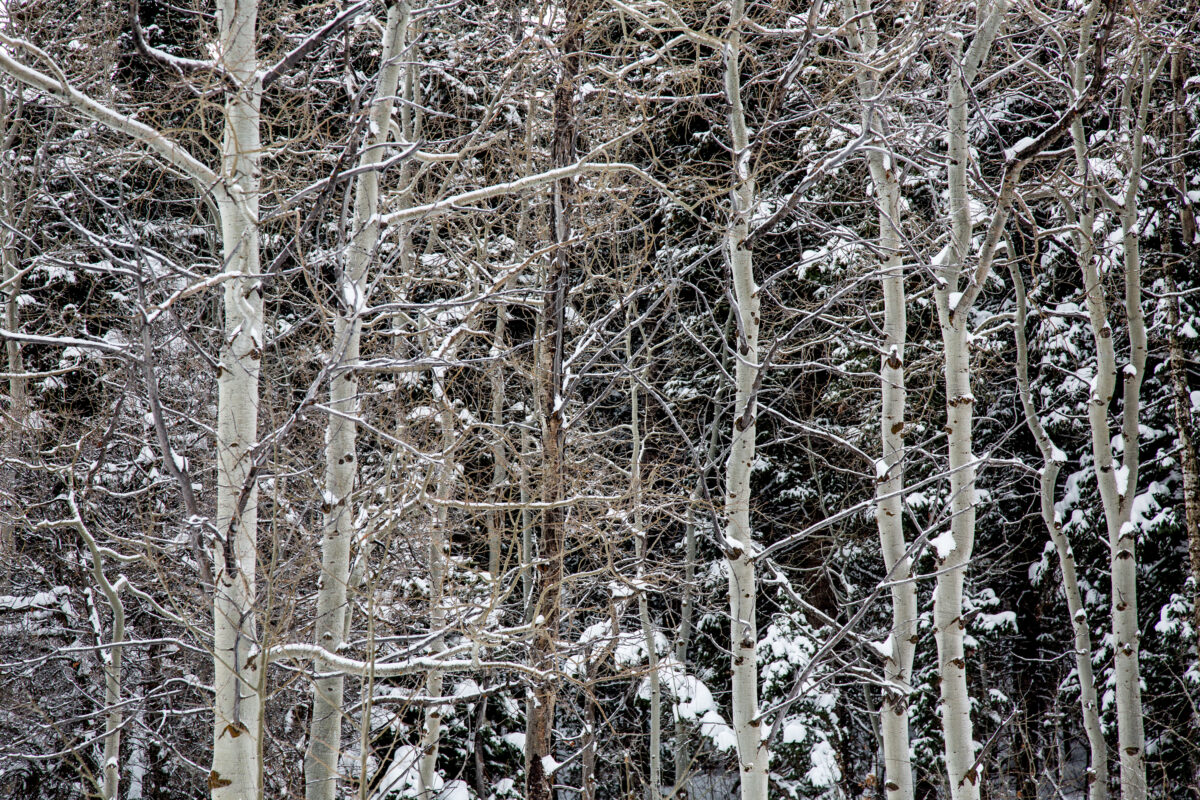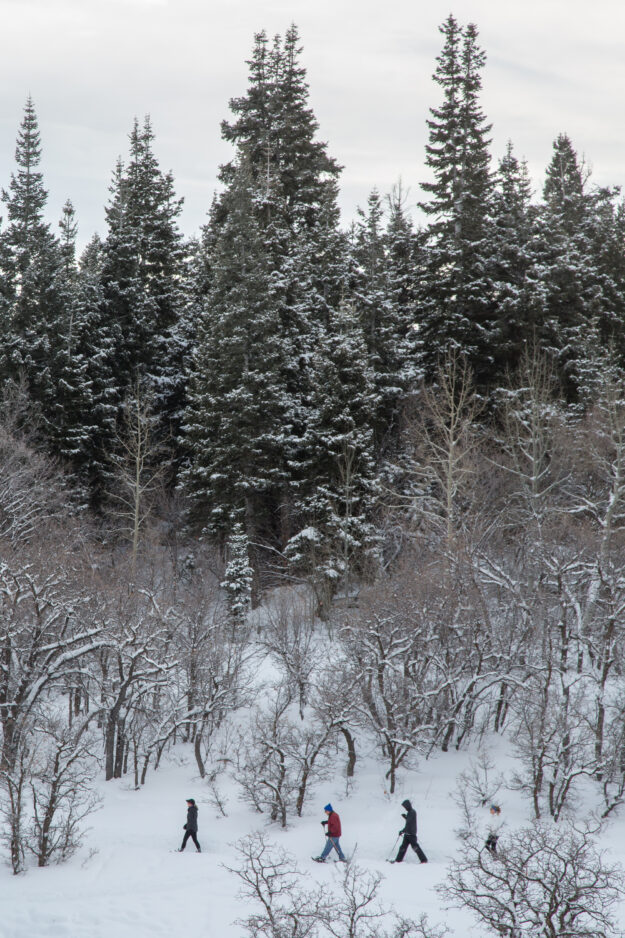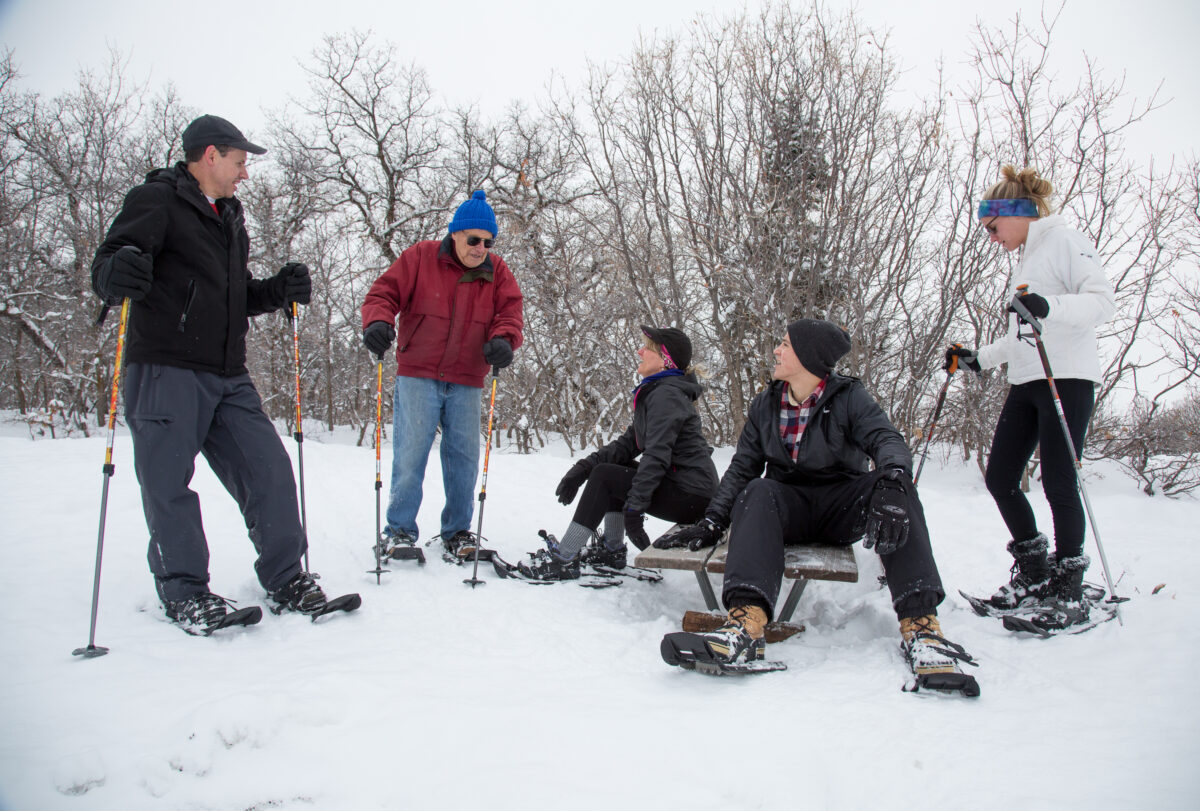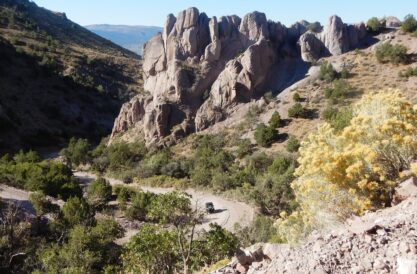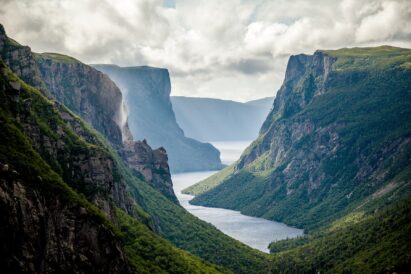A beginner’s guide to snowshoeing in Northern Utah
What? Are you going to let a little snow stop you?
For fully three seasons of the year, Northern Utah is a hiker’s heaven. But in winter, most of us hang up our boots and wait for the spring thaw.
But that’s not necessary, says Danny Anderson, a rental technician with Weber State University’s Campus Recreation Outdoor Program.
“Snowshoeing is just like hiking,” Anderson says. “But you’re wearing snowshoes.”
RELATED: Try these Ogden-area snowshoe trails this winter
It’s believed that snowshoes were first used thousands of years ago in Central Asia. The magic of the snowshoe is that it distributes one’s weight over a much larger area than the foot itself, allowing a hiker to walk atop deep snow into which he or she would otherwise sink. And these days, snowshoeing is considered an up-and-coming winter sport.
“I can’t guarantee it’s the fastest-growing winter sport,” said Michael Bucek, marketing director for the United States Snowshoe Association in New York. “But it’s one of the faster ones, no doubt about it.”
Why the popularity? Bucek says it’s because the sport is both inexpensive and easy to learn. What’s more, it can be enjoyed on many different skill levels — from a recreational stroll in a local park, to an “out-and-out adventure” in the rugged backcountry.
“Snowshoeing is relatively inexpensive,” Bucek said. “One’s you’ve got the shoes, it’s cheaper than skiing, and a whole lot easier to learn. So you can have a heck of a lot of fun — safely, for a few bucks — anytime you want in the winter.”
RELATED: Backcountry snowshoeing do’s and don’ts
Snowshoeing enthusiast Lori Lee is a Bountiful writer and author of dozens of magazine and newspaper articles, as well as four local guidebooks. She also operates SnowshoeUtah.com, a veritable treasure trove of local snowshoeing trails and tips.
For Lee, it’s a simple, beautiful pastime.
“When it comes to snowshoeing, it’s really just winter hiking,” Lee said. “It doesn’t need to be intimidating. It’s just a way to get out from under the inversion along the Wasatch Front, get up and see blue sky and beautiful scenery.”
Travis Brown, a Minneapolis-based outdoor school instructor for the REI group of outdoor stores, says snowshoeing is the perfect antidote to cabin fever.
For those interested in dipping their toes in the freezing waters of snowshoeing, here’s some handy advice from the experts.
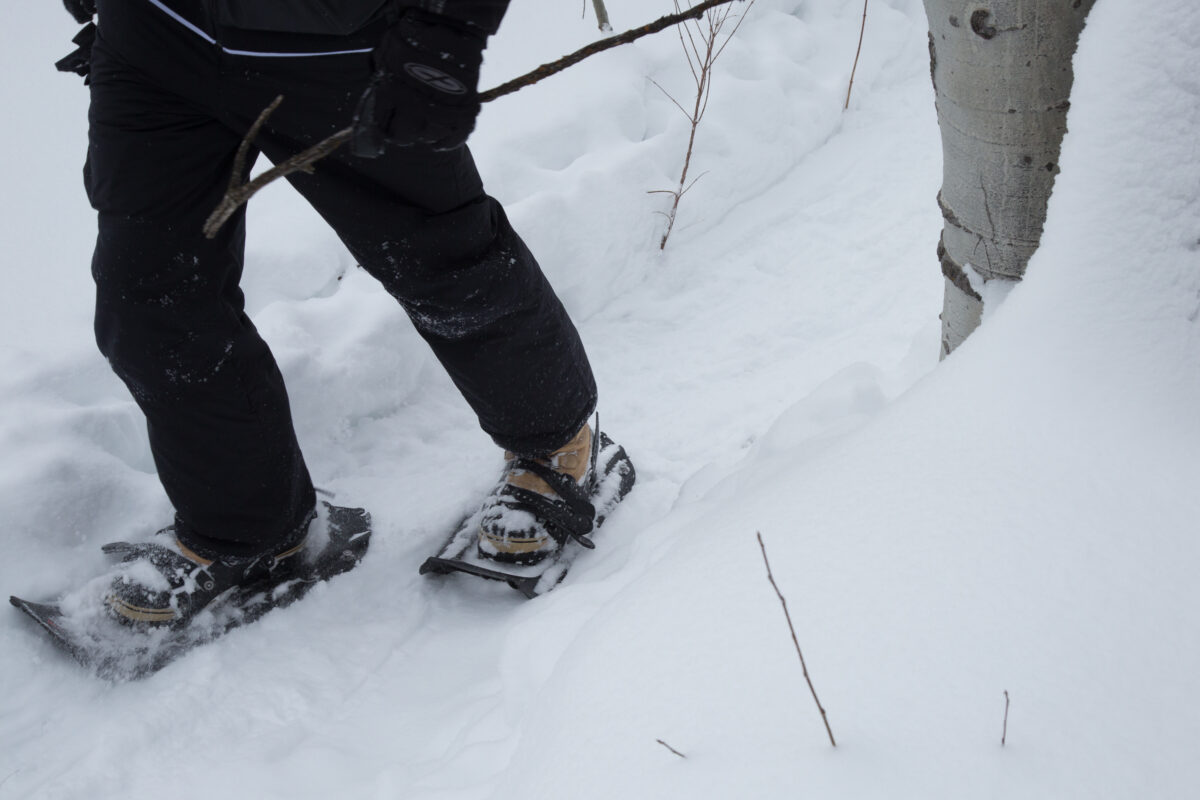
BENJAMIN ZACK/Standard-Examiner
Andrew Carroll snowshoes along the Green Pond Trail near Snowbasin Resort on Tuesday, Jan. 3, 2017.
1. Ask your doctor
Bucek offers the stereotypical disclaimer to first-timers: Make sure you’re healthy enough for snowshoeing. Exercising in cold weather can be a challenge, because it’s harder on your body.
“In colder weather, everything constricts,” he said. “So your breathing and cardiovascular systems aren’t sufficient. Snowshoeing takes a bit more physical fitness.”
However, Bucek also points out that unless you have a serious health issue, snowshoeing is accessible to just about everyone.
2. Dress for success
“Dress smartly, with layers,” Bucek says.
That includes avoiding cotton, which gets wet and stays wet. Our experts recommend synthetic fabrics that wick moisture away from the body and dry quickly.
Also, realize that snowshoeing is hard work — after 10 or 15 minutes, you’ll probably work up a good sweat.
“While snowshoeing is just walking, and anybody can do it, it’s far more cardiovascular than it looks — it really gets your internal furnace going,” Lee said. “You need to take off layers when you’re hot, because if you sweat, when you head back down the mountain and you’re not working as hard, the sweat freezes and you’re that much closer to hypothermia.”
Oh, and one more thing, Lee says: “I would say don’t ever, ever, ever wear a pair of jeans snowshoeing. I don’t care how desperate you are, don’t do it.”
Lee says everything worn snowshoeing should be waterproof, and jeans are anything but.
“Your boots need to be waterproof, your jacket needs to be waterproof,” she said. “You’re going out to recreate in snow, in the mountains. You put yourself in jeopardy for misery at the worst, but potentially hypothermia. … If you live in Utah, it’s time to invest in waterproof clothing.”
3. Focus on footwear
Brown says you don’t want to wear a heavy winter boot snowshoeing; rather, a good pair of hiking boots — waterproofed, of course — will do nicely. And avoid cheap, white cotton tube socks. A medium-weight pair of wool socks is preferable.
“As cotton gets wet, it doesn’t retain heat,” Brown said. “Your feet will get wet with sweat, so they’re going to get cold. And uncomfortable feet is one of the best ways to ruin any experience.”
Another way to keep your feet dry is to wear gaiters, which Brown describes as “rain pants for your shins.” It seals the gap between boots and pants so no snow can get in there.
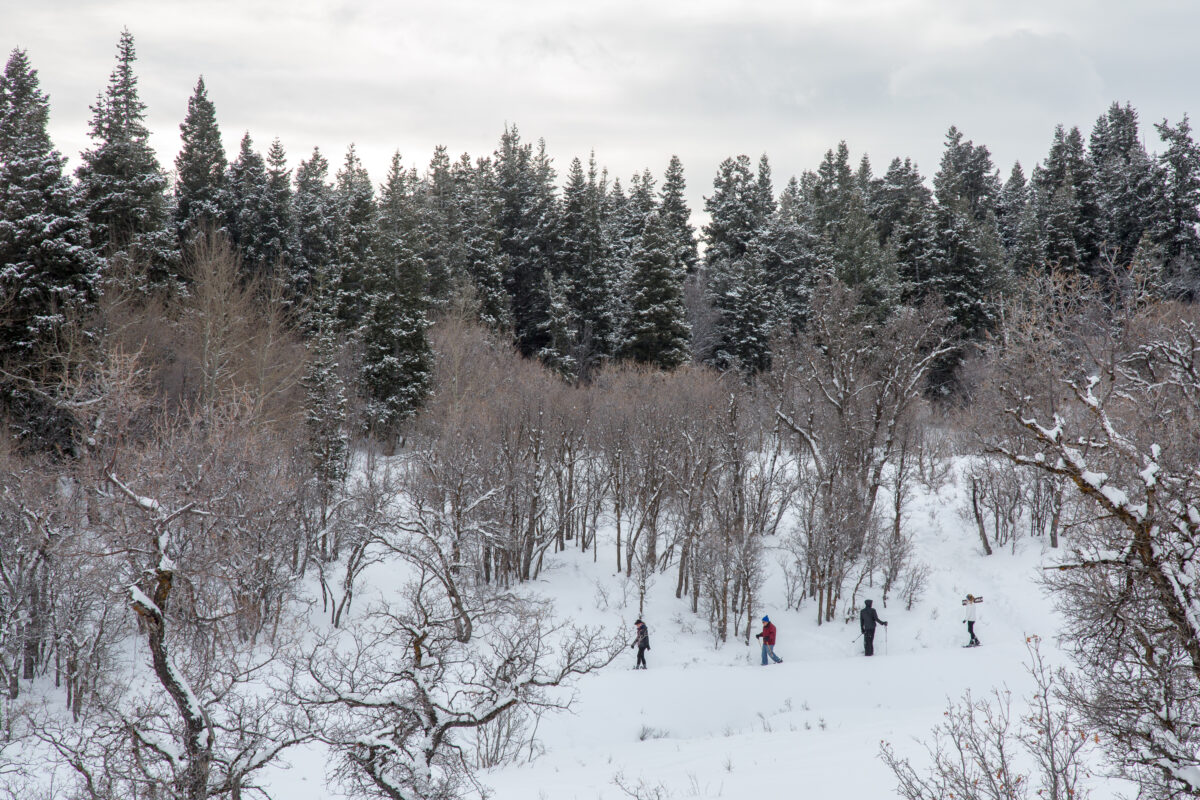
BENJAMIN ZACK/Standard-Examiner
Snowshoers work their way towards the Green Pond Trailhead near Snowbasin Resort on Tuesday, Jan. 3, 2017. The trails near Snowbasin and along the Wasatch Front bench are popular destinations for snowshoers.
4. Start out simple (read: cheap)
You can pay hundreds of dollars for good snowshoes, but Bucek recommends renting some and trying them out first.
“Don’t go crazy on the cost of an initial pair of snowshoes — you may not even like it,” Bucek said. “But lots of places will rent you snowshoes.”
Many local outdoor shops, resorts and university programs rent snowshoes. The cost is usually between $10 and $15 a day.
And even when you go to purchase your first pair of snowshoes, Bucek cautions to start out fiscally conservative. At the most basic level, he recommends the Alps Performance Lightweight snowshoes, which retail for about $65.
“For doing the park circuit, they’re fine for beginners on flat land,” he said.
If you’re looking for a slightly better snowshoe for easy- to moderate-level hikes, Bucek recommends the Crescent Moon Silver 9 snowshoes, at about $185.
5. Where to go
There’s no shortage of places for beginners to go snowshoeing in Northern Utah. Brown recommends golf courses, where allowed, because you can get some nice rolling terrain. Local parks are another good option.
Lee says there are a number of commercial snowshoe trails at ski resorts and the like — such as Snowbasin or North Fork Park — for those who want a more groomed, controlled experience. However, you’ll sometimes pay a fee at these places.
Anderson also recommends Left Hand Fork Trail, in Blacksmith Fork Canyon near Hyrum.
Lee lists dozens of trails throughout Northern Utah at www.snowshoeutah.com (click on “Table of Contents”). Three trails Lee particularly recommends for beginners are:
• Wheeler Creek to Art Nord: Wheeler Creek Trail, a 1.8-mile one-way (with shuttle) trail up Ogden Canyon in Weber County.
• Little Cottonwood Canyon Trail, a roughly 5-mile out-and-back trail at the mouth of Little Cottonwood Canyon in Salt Lake County.
• Donut Falls/Doughnut Falls, a 3.5-mile out-and-back trail up Big Cottonwood Canyon in Salt Lake County.
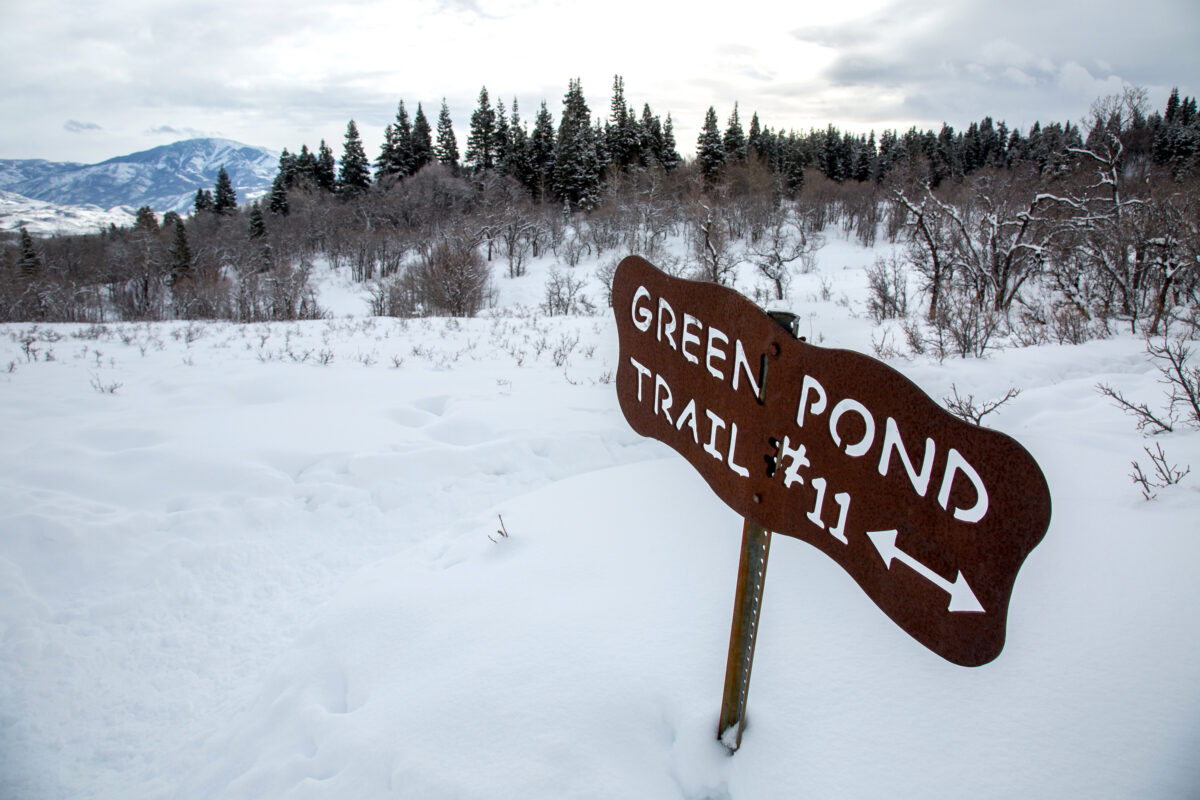
BENJAMIN ZACK/Standard-Examiner
Trail signs mark the popular snowshoeing routes near Snowbasin Resort on Tuesday, Jan. 3, 2017.
6. Hydrate. And don’t forget the snacks.
“Make sure you take water and snacks with you,” Lee says. “You’re burning calories — that internal furnace is working harder than you think it is — so you need snacks. And you need more water than you think you need.”
Bucek says the air is so dry in the winter, you’re losing moisture with each exhaled breath.
“I don’t know if people think of it, but you require huge amount of water in the winter,” he said. “You may not feel as thirsty as in the summer, but you need to keep drinking.”
Brown believes dehydration and overheating are the two biggest problems facing beginning snowshoeing enthusiasts.
7. Just do it. But not alone.
“The only way to get out there is to get out there,” Anderson says. “But don’t go out by yourself, ever.”
Although snowshoeing is not a fast sport, like skiing, it does take place in extreme weather conditions and you can get hurt, according to Bucek. Especially in the mountains, the avalanche danger is real. Experts recommend that beginners stick to the easy-to-moderate, well-established trails in safe areas, near civilization.
“Pretty much don’t go into the backcountry until you know what you’re doing,” Anderson said.
Bucek agrees: “You don’t want to get lost in the winter, when it’s 9 degrees out. I would highly recommend caution for the beginner.”
8. Know where you are
If you do decide to go off the beaten path, make sure you know where you are and how to get out, Bucek said. Always carry navigation and know how to use it. Bucek recommends a compass.
“It’s cold out there, and GPS is not always reliable below a certain temperature,” he said.
9. Accessories
The experts recommend taking along a backpack to carry snacks, water and those extra layers of clothing you’ll shed during your hike. Brown also highly recommends snowshoeing poles, which help with stability in the snow.
10. Above all else, enjoy
Lee says safety is important, but the ultimate goal is to have fun.
“Use your senses when you’re out there,” she says. “Stop and listen to the birds, feel the snow, and touch the bark on the trees. Make it a sensual experience where you’re listening, and looking, and experiencing.”
Lee insists snowshoeing is a better workout than most gyms can provide.
“It’s better for you,” she said. “You usually burn more calories than in a gym on a treadmill. And you’re doing it in fresh air, outside, where you can get in touch with nature.”
More help?
For those nervous about trying snowshoeing on their own, Weber State University’s Outdoor Program is offering three snowshoe hikes in its Winter Trails Series. The trips, which begin at 7 a.m. Saturdays, visit different trails in the Ogden area.
On Jan. 14, the group will hike the Lewis Peak Trail; on Feb. 4, it will tackle the Indian Trail; and on March 18, the Ben Lomond Shoulder.
The group hikes, for ages 18 and older, are geared toward a beginner skill level with a moderate fitness level.
For more information, visit WSU’s Winter Trails Series page or call 801-626-6373. Preregistration is required.
REI also offers a range of classes for snowshoeing, including everything from a free in-store basics class to fee-based in-the-field classes. For a listing of local classes, go to rei.com/learn and and enter your city, state or ZIP code.
Contact Mark Saal at 801-625-4272, or msaal@standard.net. Follow him on Twitter at @Saalman. Like him on Facebook at facebook.com/SEMarkSaal.


